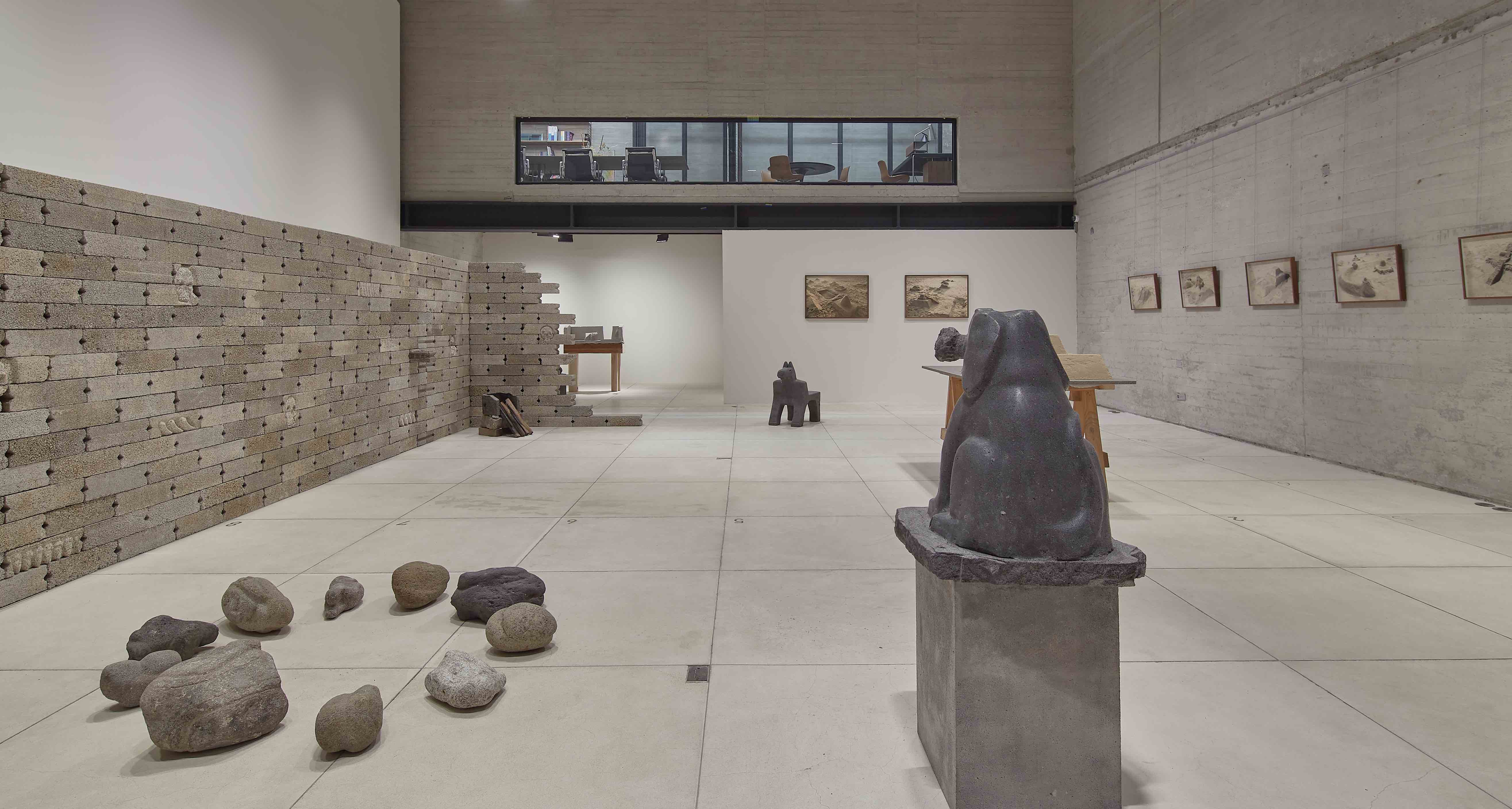
Review
Who Makes the Idols We Worship? Notes on Historia de arena by Diego Pérez
by Fernando Pichardo
At Galería RGR
Reading time
7 min
After a pause owing to the pandemic, Galería RGR has resumed its cycle of activities with Historia de arena (“History of Sand”) by Diego Pérez, a show that questions the role of monuments as promises of perpetuity. The artist has taken as his starting point sand’s symbolic values in order to forge new perceptions around the historical officialism deployed from materials “that last forever” like bronze or stone, an officialism that prevents the participation of new readings and perspectives.
Sand is a conglomeration of amorphous particles without beginning or end, which in its natural state is found to be in eternal motion. Pérez has made use of these qualities in order to generate a commentary on Mexican nationalism: a project conceived in the nineteenth century that has since turned to archaeological heritage in order to forge a glorious fiction of the past, and that has resulted in a monolithic identity, one that founders in its mission to entrench its roots in society.
The exhibition is structured around two axes inspired by the notions of impermanence in the monumental and permanence in the ephemeral, establishing a conversation between sculpture, photography, and temporary architecture. In the first block, the artist took as his reference pyramidal bases—characterized by having been erected with stone—in order to produce prototypes that remind us that transformation is an inevitable phenomenon, capable of overcoming any modernizing discourse. In the second, Pérez conceived a series of statues made with a basalt stone called recinto (“enclosure” or “compound”), recovering the regional meaning that this type of quarry had during the first half of the twentieth century. The works in this section are sustained by Mesoamerican iconography, cartooning, and fantastic architecture.

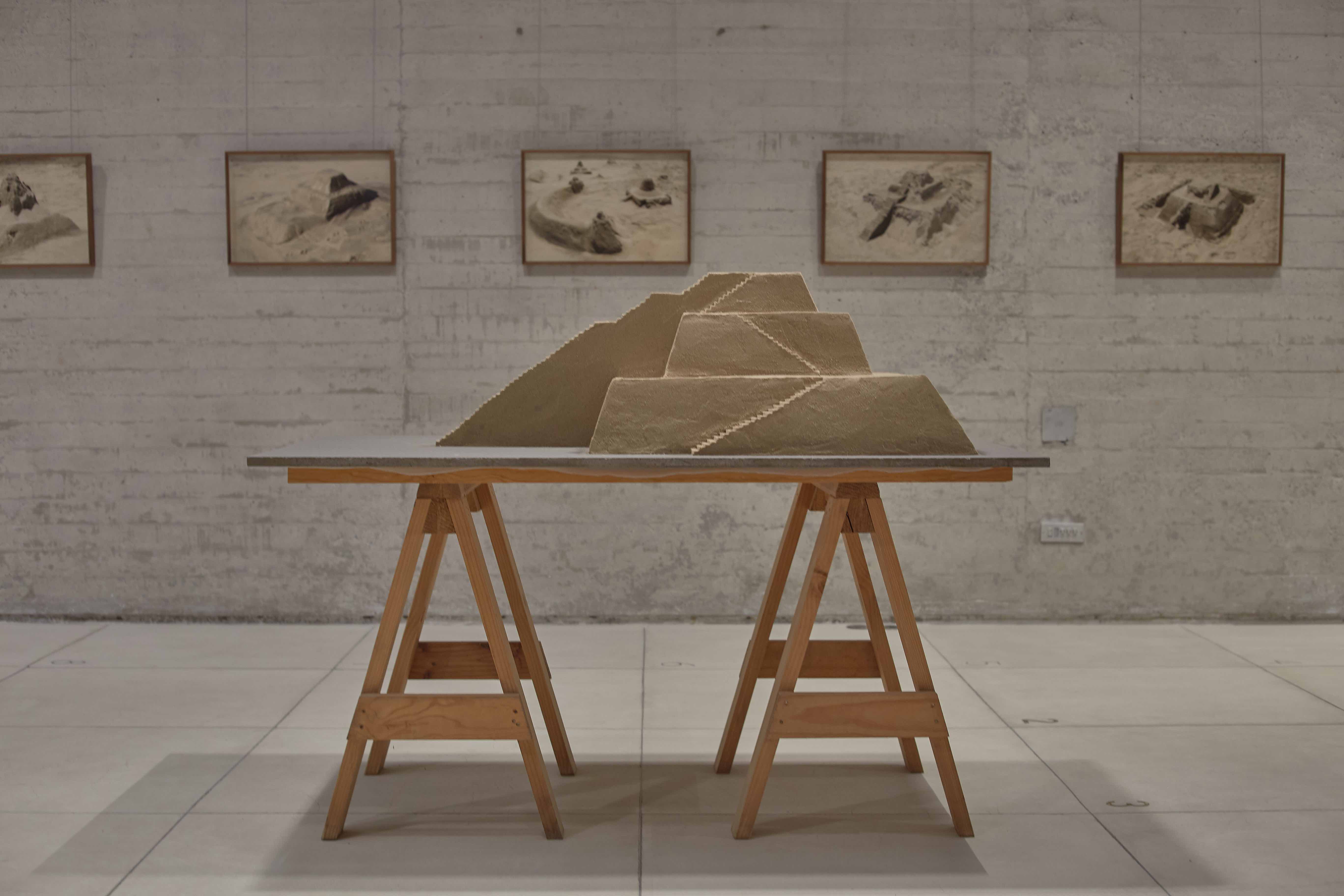
The event positions as its nodes the Mesas infinitas, three scale temples made of sand and placed on wooden supports. These sculptures emulate archaic constructions traditionally linked to the origins of humanity, such as ziggurats and circular bases. Each model was conceived as a non-repeatable trial: Pérez will restore these sand castles only once, and then release his control over what may happen to the structures. With these pieces the artist pays homage to the passing of time, allowing erosion to take over the creative process.
Pérez also turned to sand in order to destabilize the pragmatic, heroic, and moralizing vision upon which the model of social development and historiography in Mexico has traditionally been based. The gathered works call attention to how the memorials, colossi, and empires that we raise from the ground end up becoming ruins. Part of the visual record that the artist made of his prototypes on the beaches of Puerto Escondido is included in the series Apuntes para la mesa infinita. Vista panorámica.
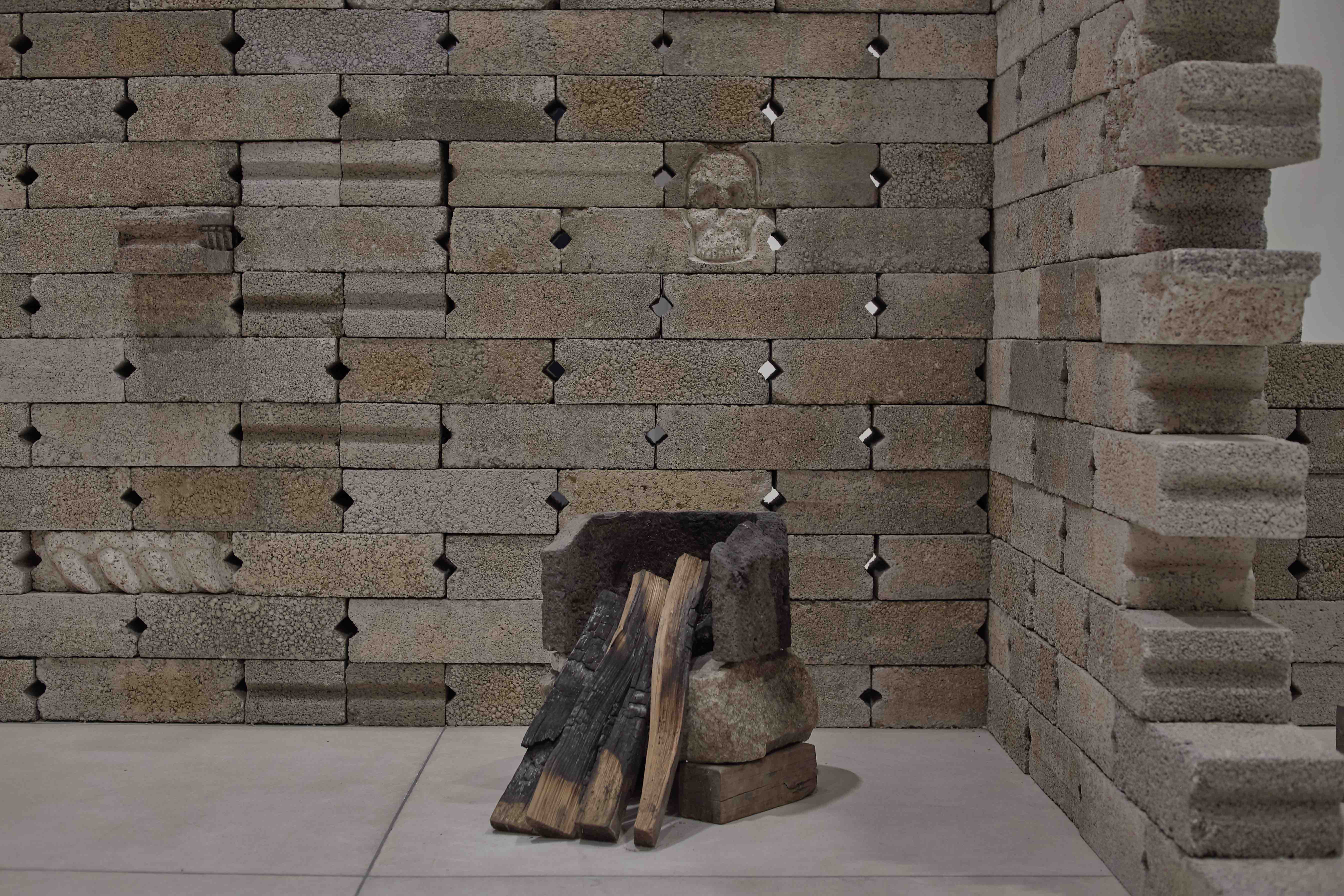
In the same way, the show evokes the urban context surrounding the masonry workshop where the pieces were made, located in the State of Mexico. In order to achieve the effects of spaciousness and confinement in the gallery’s center, a partition wall was placed there, carved with skulls and pre-hispanic motifs. The installation forges a continuity between sacrificial altars known as tzompantli and the do-it-yourself construction dominant in the Metropolitan Area of the Valley of Mexico. Through the overlapping of partitions and the inclusion of a grill accompanying this barrier, a link was generated with improvised construction materials, on many occasions using what was at hand.
The partition’s industrial character suggests a correspondence with Piedras sin título, a group of ready-mades that Pérez bought from a sculptor living precariously—or an amateur artisan, as the gallery’s website describes him—in Chimalhuacán. It consists of a set of stone and concrete carvings whose appearance blurs the boundaries between ancient and new, and which are easily confused with pre-columbian figures and deities. In sum, the pieces and ephemeral wall summon the visual richness that lies in most of the national territory’s urban centers. Nevertheless, the intention under which they were originally generated disregards the production chains that should be addressed when talking about peripheries.
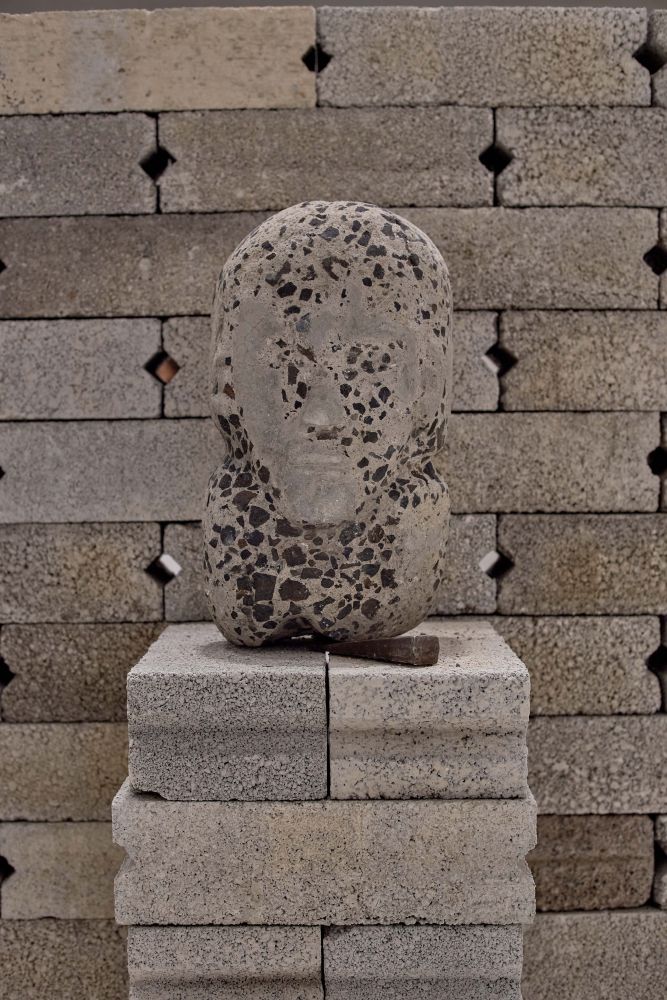
Take, for example, Prócer anónimo, a work made by the same amateur artist, which consists of a piece of concrete emulating the busts of Benito Juárez that abound in public spaces throughout the country. This work demonstrates the modifications that national symbols receive from the collective public, and also positions itself as a dialogue in which Pérez’s individuality and the artisan’s anonymity converge. However, this last point is problematic as the visitor is never given any hint of the carver’s identity.
It’s likely that Prócer was added to the assemblage in order to make visible the networks of collaboration on which Pérez relies, but the partial recognition that in this case was given to the other creator subordinates the physical and intellectual work of those who have been categorized as “artisans” for generations. This strengthens hegemonic narratives that position the figure of the artist as a creative genius. Given this panorama, it’s necessary to ask ourselves what benefit this person obtained in economic or professional terms following the acquisition of his pieces.
Also included in the exhibition are other works that play with seemingly contradictory concepts. One of these is El sabueso del Vasco, which recovers the chronicles of Leoncico, a dog that gained fame among the conquistadores of Darién for the violence with which it dismembered the area’s indigenous people. For its part, El perro y la serpiente consists of a humorous gesture that combines the hieraticism of Mexica sculpture with animated cartoons.
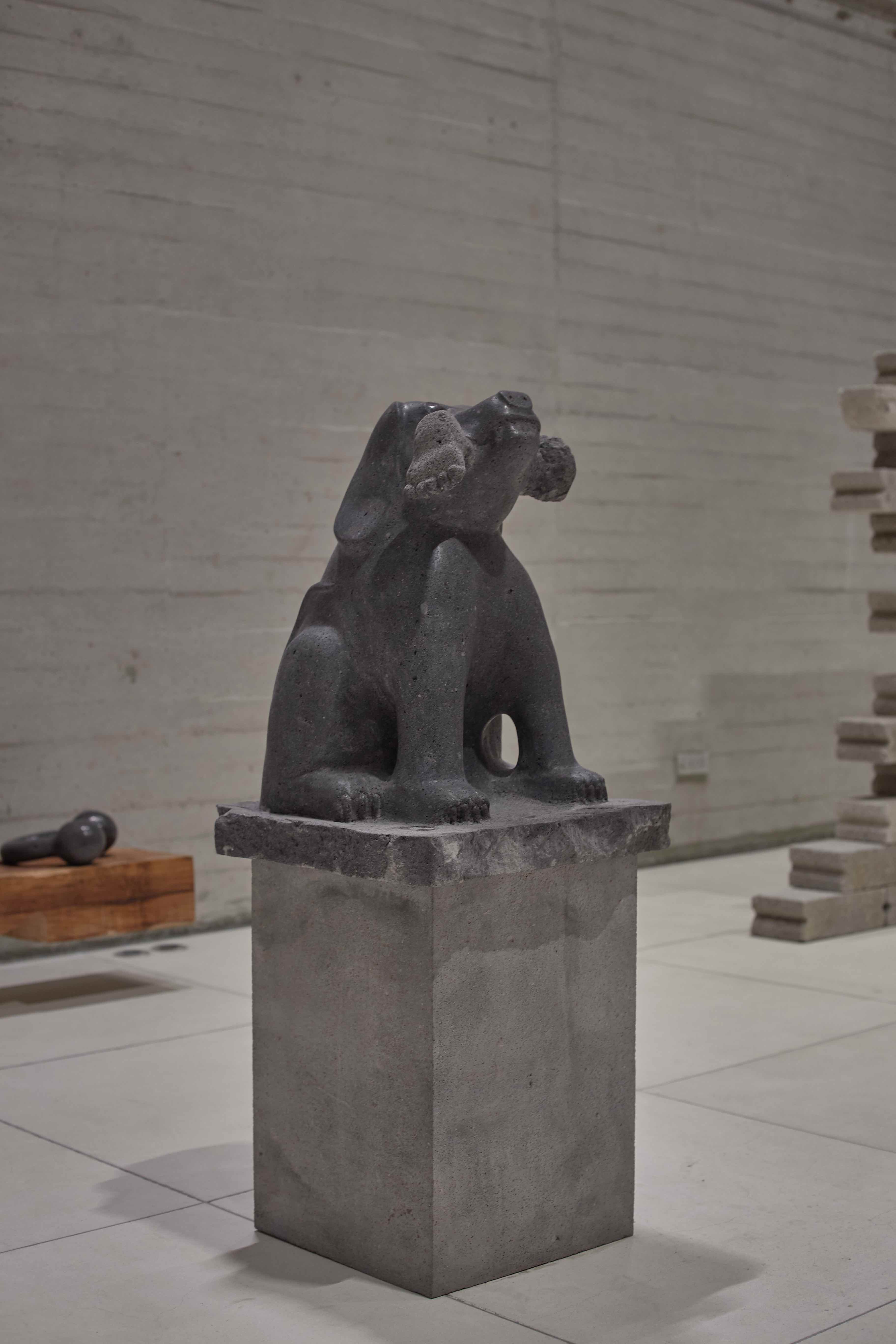
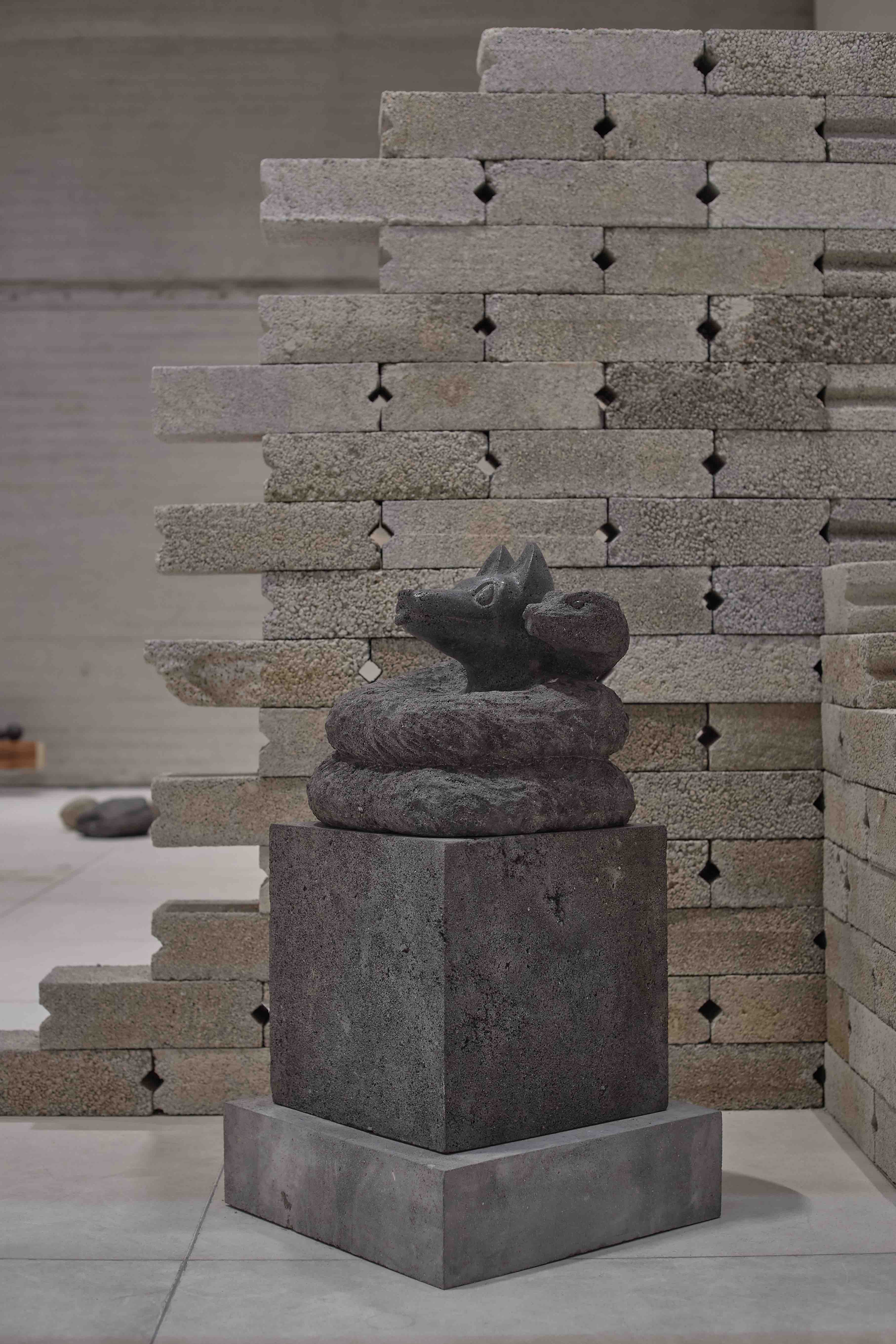
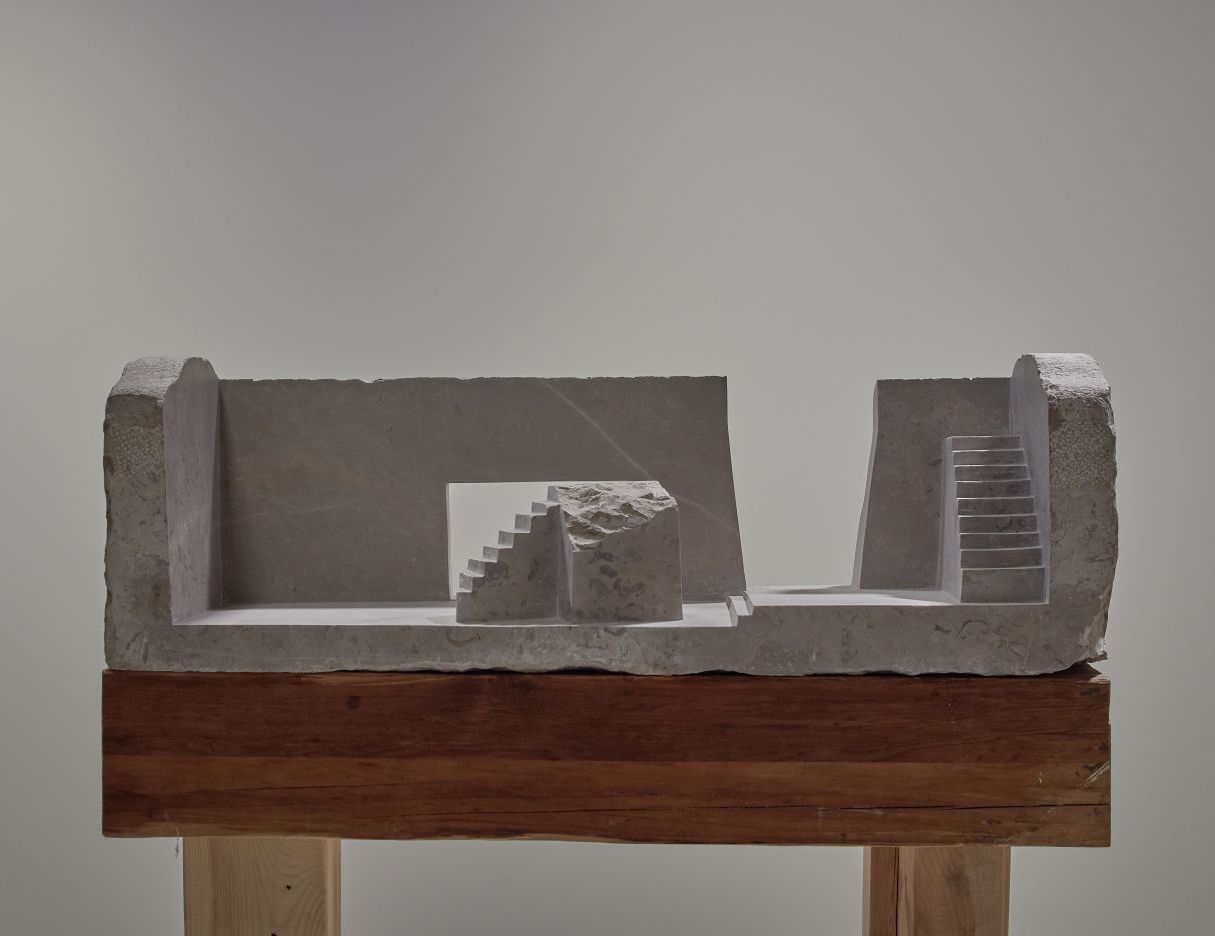
At one side is exhibited La casa del cantero and Mesa de mármol con dos escaleras, which are among the pieces with the greatest expressive potential owing to the interaction of organic and abstract forms that they present. The second piece, carved from a block of Carrara marble discarded from a restoration at the Palacio de Bellas Artes, contains slopes, stairways, ridges, and niches that recall the metaphysical architecture conceived by Gonzalo Fonseca beginning in the 1960s.
Historia de arena traces a narrative in which the element in question is positioned as a metaphor for the multiplicity of universes that exist—a recurring scenario in various cultures—through a poetic visuality and an exaltation of the surfaces, textures, and atemporality of the raw materials used. But the critique of monuments and of the validity of the ideal of the Homeland exercised by Mesas infinitas is aligned with a position on the contemporary horizon that is gaining more and more acceptance; as a result, this line is not very provocative.
Apart from that, Pérez’s discourse becomes ambiguous upon formulating whether what’s sought with the occurrence of works made by a third party is to subvert the inequities of art’s commercial circuits. How should we rethink the enunciations of future commissions so that artisans are not perceived by the public solely as providers of services or manual labor? How can we incorporate from within the galleries the voices and complexities that constitute the peripheries, beyond the plastic or the formal?
The exhibition will be open until October 31st, 2020. Schedule an appoitment here.
Translated to English by Byron Davies
Published on October 8 2020